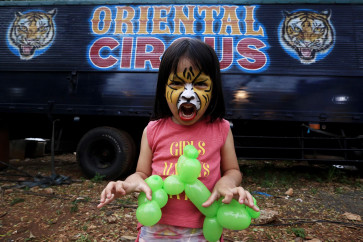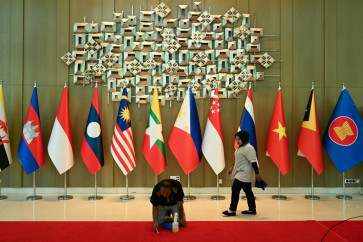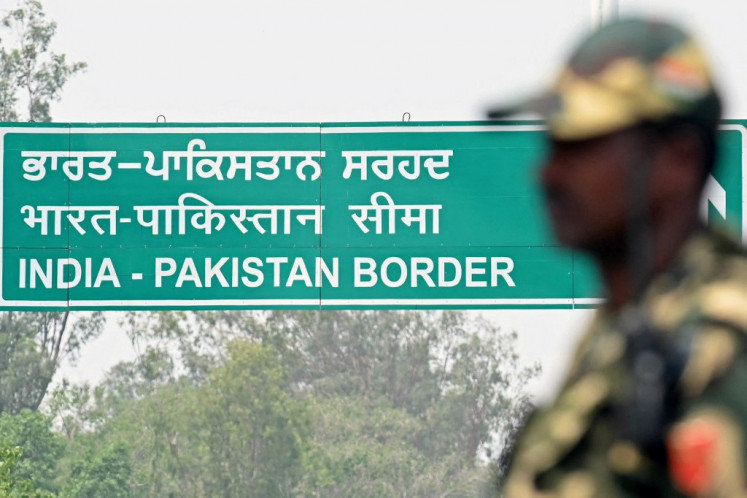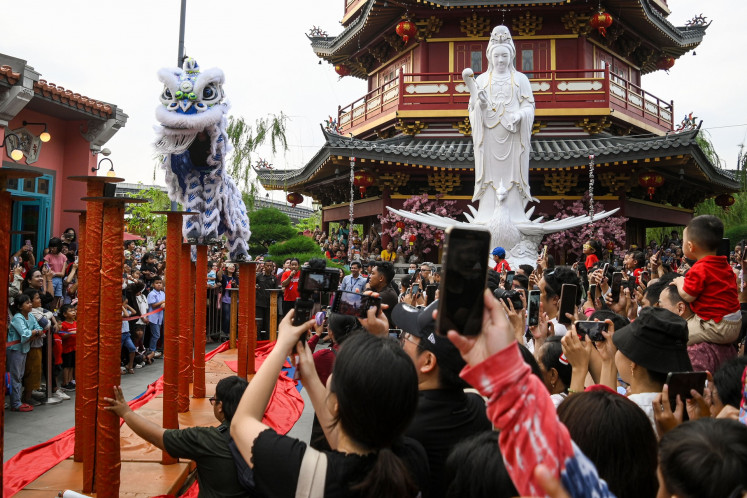Cattle to bring Indonesia, Australia closer?
The Indonesian government has approved the purchase of 1 million hectares of Australian land to breed its âownâ cattle to be transported back to feedlots at home
Change text size
Gift Premium Articles
to Anyone

T
he Indonesian government has approved the purchase of 1 million hectares of Australian land to breed its 'own' cattle to be transported back to feedlots at home. Whilst the plan still needs to be approved by Australia's Foreign Investment Review Board, it has attracted an intense response from the Australian public but not so much from Indonesians.
For Indonesians, some relevant questions in relation to this plan are what this plan means for Australia-Indonesia live cattle and beef trade relationships and also, how this plan can help Indonesia achieve beef self-sufficiency.
Many stakeholders, who have been involved in the bilateral trade talks, would see this plan as a good indication that ties between the two governments remain strong.
For many researchers in Indonesia, the plan to invest in Australia may also mean that the Indonesian government finally realizes that Indonesia does not have a comparative advantage in cattle breeding.
In the past, many policymakers refer to the vast size of Indonesia's land as a proxy for comparative advantage, ignoring the fact that the country is facing resource competition and, in many regions, it is more profitable to allocate the land to higher value agricultural commodities such as coffee and oil palm plantations than cattle breeding operations.
A drop of over 2 million in the total cattle population in the last two years seems to have made the government worry that without any policy changes we are going to run out of cattle in the next three to four years.
For most Indonesians, this plan could mean that the Indonesian government finally puts 'access to affordable beef' as a priority rather than locally producing beef. In addition, Indonesia can get value added from fattening and slaughtering, meaning job opportunities for locals. Maintaining the slaughtering process at local abattoirs could also 'solve' problems coming from chilled or frozen imported beef. Most Indonesian consumers have become used to buying beef from wet (traditional) markets and would not normally deem frozen beef a fresh product.
It is not surprising that the State Logistics Agency's (Bulog) imported frozen beef has not been responded to enthusiastically by local consumers not to mention the concerns about whether the imported beef meets halal or Islamic dietary requirements.
Given the above rationale, the Indonesian government seems to believe that (if all progress as planned) the land investment will support Indonesia's programs to achieve beef self-sufficiency. This conclusion, however, warrants further investigation.
First, the link between increased numbers of breeder cattle produced by Indonesia's state-owned enterprise (i.e. PT Rajawali Nusantara Indonesia) and Indonesia's beef self-sufficiency goal requires a clearer definition of self-sufficiency. Would those breeders be considered to be imported breeders? Would their beef be considered 'locally produced'?
An improved understanding of what the Indonesian government attempts to actually achieve is required, given that in the last few years the Indonesian government seemed to focus on smallholders' role in beef production and reducing reliance on imported live cattle and beef rather than providing affordable beef by incorrectly equalizing food security and self-sufficiency.
Having said that, whether increases in imported breeders would mean Indonesia is closer to its self-sufficiency target would solely depend on how we define 'local production'. It seems to be inappropriate to 'modify' the definition just to (politically) show the progress of the program.
Setting up cattle breeding operations in Australia could have both adverse (inefficient smallholders may leave the breeding operations) and positive impacts on smallholder beef producers in Indonesia. The positive effect is expected from the knowledge transfer. But to what extent this improves the existing knowledge is unclear.
The Australian government, through the Australian Center for International Agricultural Research (ACIAR), has invested substantially to assist the Indonesian government to improve smallholder beef operations through investments in research and development (R&D). The outcome of such investments includes capacity building of local researchers, extension officers, farmer groups, etc. There are many examples of successful projects especially in West Nusa Tenggara (NTB) and East Nusa Tenggara (NTT).
However, despite these regional successes targeting a level of national production that is sufficient for all of the Indonesian population, it may be too ambitious considering the lack of comparative advantage and land use competition Indonesia is facing. Thus, such R&D programs would be more effective if they are seen as community development, which to some extent can help the national beef production. But, again, it seems that, at least at the moment, even the optimal production capacity doesn't seem to fulfill local demand.
Furthermore, breeding is just one piece of the puzzle. If consumers are still not familiar with frozen beef, Indonesia continues to face a huge challenge to improve the efficiency of its supply chains. About 70 percent of beef is consumed in the western parts of Java, especially Jakarta and beef production mostly occurs in NTB and East Java.
From the Australian perspective, despite a significant transaction value that they will get from Indonesia's land purchase, the investment could bring a new level of competition to cattle breeding operations. Australian producers are highly efficient in their production. But what can be a concern is that how Indonesia would treat breeders produced by Indonesia's state-owned enterprise in Australia.
This would affect how import permit allocation will be made and whether Indonesia's enterprise would get preferential treatment. Indonesia's commitment to fair and free trade is once again being put to the test.
The writer is a research fellow global food studies, Faculty of Professions, the University of Adelaide.









